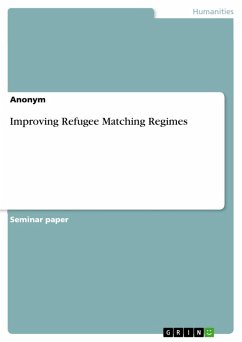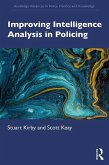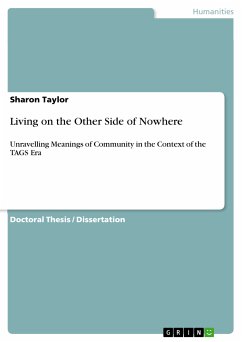Seminar paper from the year 2019 in the subject Sociology - Individual, Groups, Society, grade: 1.0, Rice University, language: English, abstract: According to Andersson (2017), there are two distinct categories to refugee assignment: the first is assignment through resettlement schemes, i.e., the authorities have information about the number of refugees that will need to be allocated within a specific time interval as well as the refugees' characteristics. This is known as a static assignment. The other is for those refugees that directly arrive at a location, also known as asylum seekers, without a resettlement scheme, these are dynamic assignments. The introduction of dynamics results in uncertainty around the number of refugees that need to be allocated within the market. In this paper, we intend to explore two approaches suggested by Andersone et al. (2018) and Delacretaz, Kominers, & Teytelboym (2016). We will further discuss how these algorithms compare to those currently in place. The global refugee population was estimated to be as high as 25.9 million at the end of 2018, up from 10.5 million in 2012, which represents an ever-growing global refugee market. The top ten countries of origin account for 82 percent of all refugees, or 16.6 million in 2018. Each year, there are over 3.5 million asylum seekers, with most going to the USA, Turkey, and Germany. This, together with the overall increase in demand for allocations, means that much more emphasis must be placed on the improvement of current mechanisms to make refugee allocations more efficient and cost-effective for all parties involved.
Dieser Download kann aus rechtlichen Gründen nur mit Rechnungsadresse in A, B, BG, CY, CZ, D, DK, EW, E, FIN, F, GR, HR, H, IRL, I, LT, L, LR, M, NL, PL, P, R, S, SLO, SK ausgeliefert werden.









